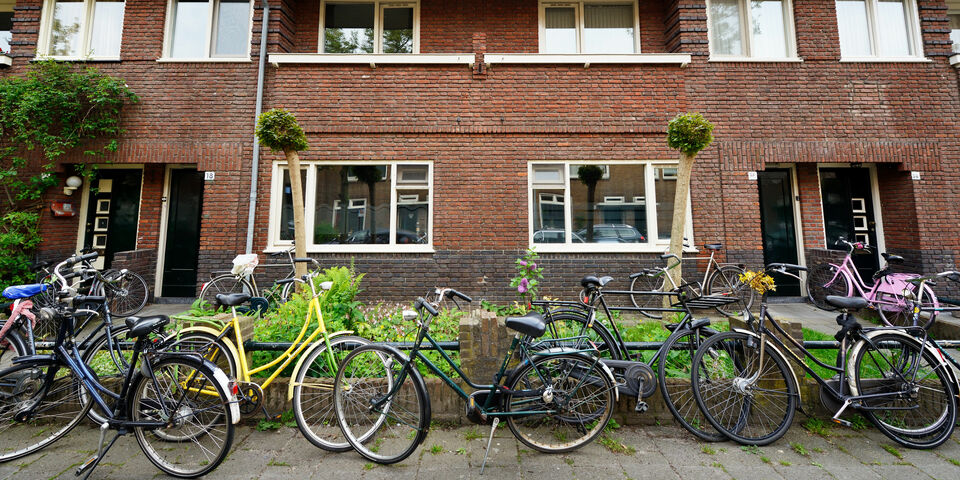Hundreds of student houses in Eindhoven possibly illegal
In May 2020, the municipality of Eindhoven stopped issuing permits for split homes within a distance of thirty meters from other split homes. A rule that also applies to property that was split without a permit prior to that date. It seems that this holds true for 850 sites, including many students houses. Alderman Yasin Torunoglu made the promise in regional newspaper Eindhovens Dagblad (ED) that no short-notice evictions will be issued, but council member for D66 Jorien Migchielsen is worried and indignant. “You don’t tackle nuisance by exacerbating the problem of housing shortage.”
Property owners who want to turn a regular house into a student house or an apartment complex, need to apply for a permit. Since 15 May 2020, the municipality of Eindhoven no longer issues such a permit for homes within a 30-meter radius of other split homes. The aim of this rule is to prevent a proliferation of student houses and other properties that house large numbers of tenants – such a migrant workers – in certain areas. This is supposed to increase neighborhood livability. The measure is a follow up to the ten percent rule, according to which no more than ten percent of property in a neighborhood qualifies for room rental.
The thirty-meter measure also applies to property that was split without a permit prior to May 2020. The municipality only recently made an inventory of the number of premises to which this applies. The municipal records database shows that the number of premises with too many people (who don’t belong to the same household) registered at the same address amounts to 1400. Of these premises, 850 are within a 30-meter radius of another split house.
Customized solutions
In last Friday’s edition of the ED, Alderman Yasin Torunoglu puts the high number of illegally split homes into perspective. First of all, it’s only an estimate. The municipality still needs to check whether all registered residents actually (still) reside at the addresses in question. Second, there is a transitional agreement for landlords who have been renting out rooms – without a permit – for some time already. Based on history, these homes will still be eligible for a permit, even if they are located too close to another split house.
The alderman also doesn’t plan to evict residents at short notice. After an investigation is carried out, he wants to determine where “living in rooms is truly undesirable” and where “customized solutions” can ensure that residents are allowed to remain where they are, he told the ED. The municipality will only take immediate action when the situation becomes dangerous, Torunoglu says.
Outcast
Jorien Migchielsen however is deeply worried, in spite of the alderman’s soothing words. The council member for D66 – the only party that fiercely opposed the thirty-meter rule last year – is also indignant. “Now we have to witness with regret the impact of this measure. You don’t tackle nuisance by exacerbating the problem of room and housing shortage in general. If neighborhood nuisance is the problem, that’s what you should fight against. For example, the D66 faction contributed to the requirements for student house insulation.”
According to Migchielsen, all blame is assigned to students. “There are often several factors at play when there is nuisance in neighborhoods, such as thin-walled houses, narrow streets, high unemployment rates and loitering teens. Why would you only go after student houses?”
Migchielsen, who studied biomedical engineering at TU/e, thinks it’s ironic that the municipality constantly talks about a friendly environment for the engineers Brainport is so desperate to recruit. “Students are practically treated like outcasts, until they graduate. That’s wrong.”
Undermined
The municipality also undermines many of its efforts to solve the problem of housing shortage for students at TU/e, Fontys, the Design Academy and Summa, Migchielsen says. The number of student rooms has increased with 1800 over the past years, according to the ED. Another 700 will be built on the university campus in the coming years.
“The municipality assumes that two residents live in one illegally split house. Everyone knows that the number of students in an average student house is higher than two, but probably not all 850 properties are student houses. So, let’s assume that there are indeed 1700 illegal student rooms, we can deduct that number from those 2500 extra rooms,” Migchielsen says. And meanwhile, the number of students continues to grow. “The university alone has seen an increase of 5000 students over the past decade.”
Covenant
How does TU/e’s Executive Board view the room shortage, and the impact of the municipality’s measures on this problem? Board spokesperson Ivo Jongsma says that the university, in collaboration with the municipality and other relevant partners, is working on a new Covenant Student housing 2021-2028, as a follow up to the covenant 2012-2020. The impact of the municipality’s policy will be incorporated into the new covenant, which is expected to be signed soon.
In the meantime, council member Migchielsen is working on a number of questions on the matter for alderman Torunoglu. “Hopefully, we can put the undesirability of the thirty-meter measure back on the agenda.”


Discussion